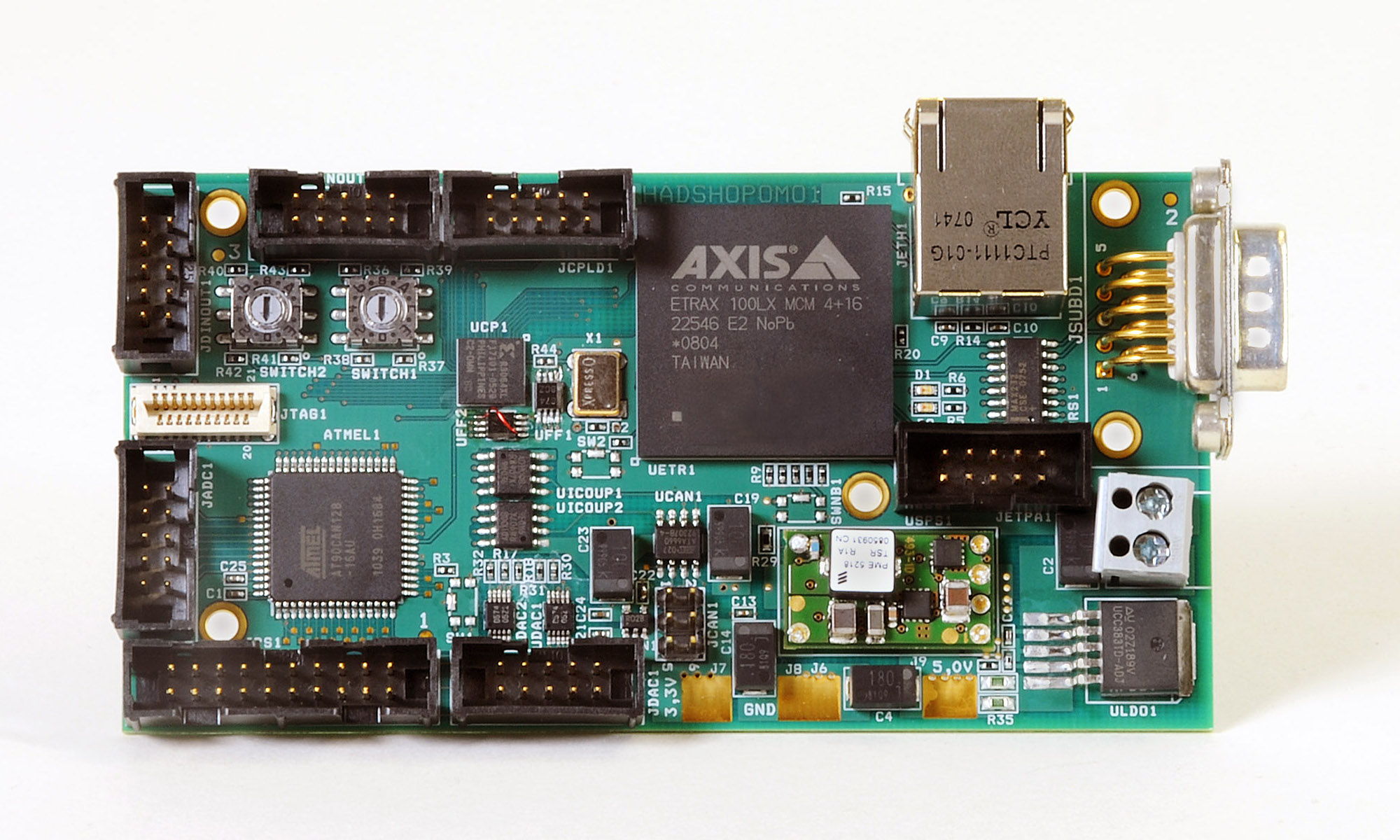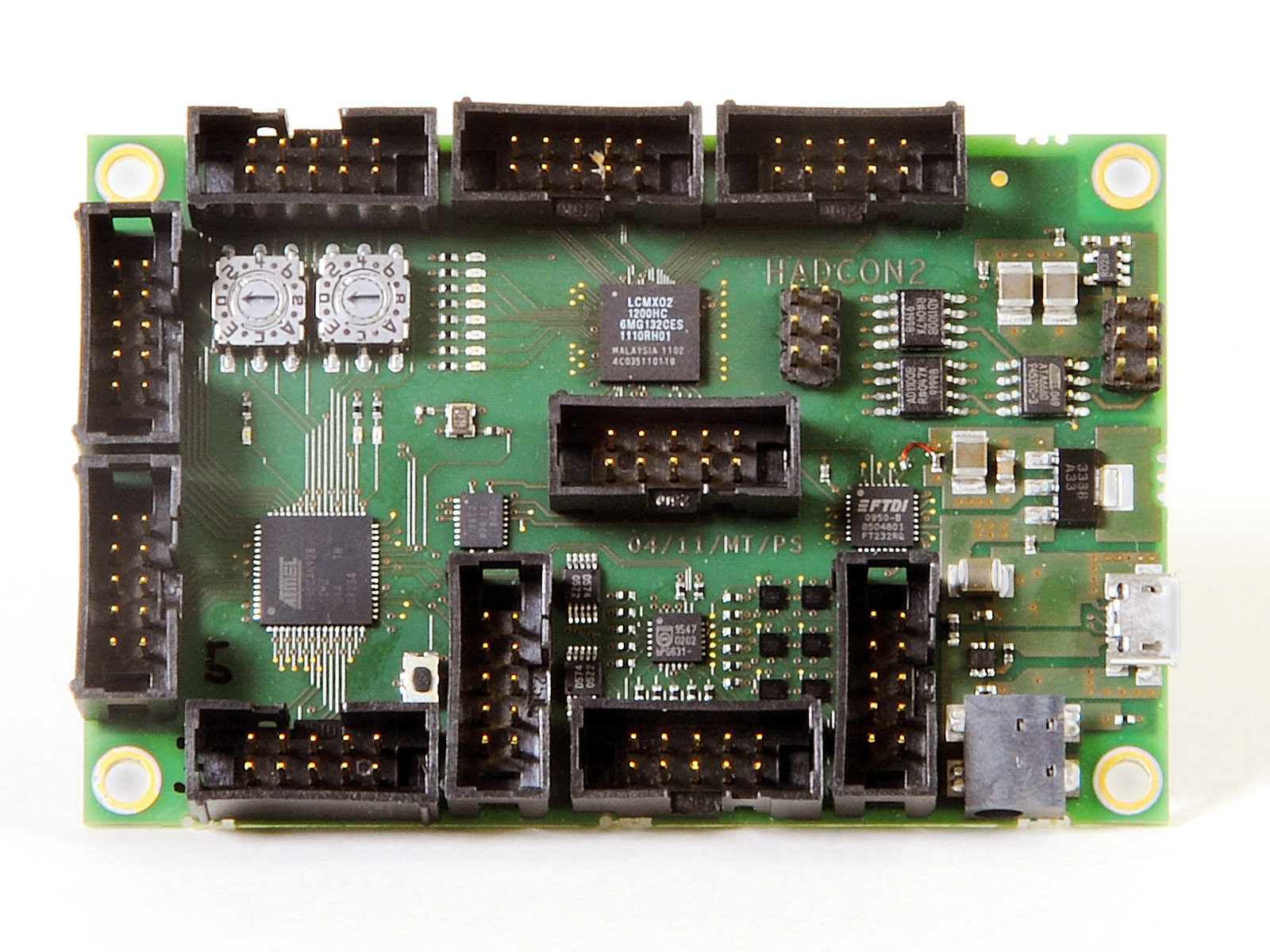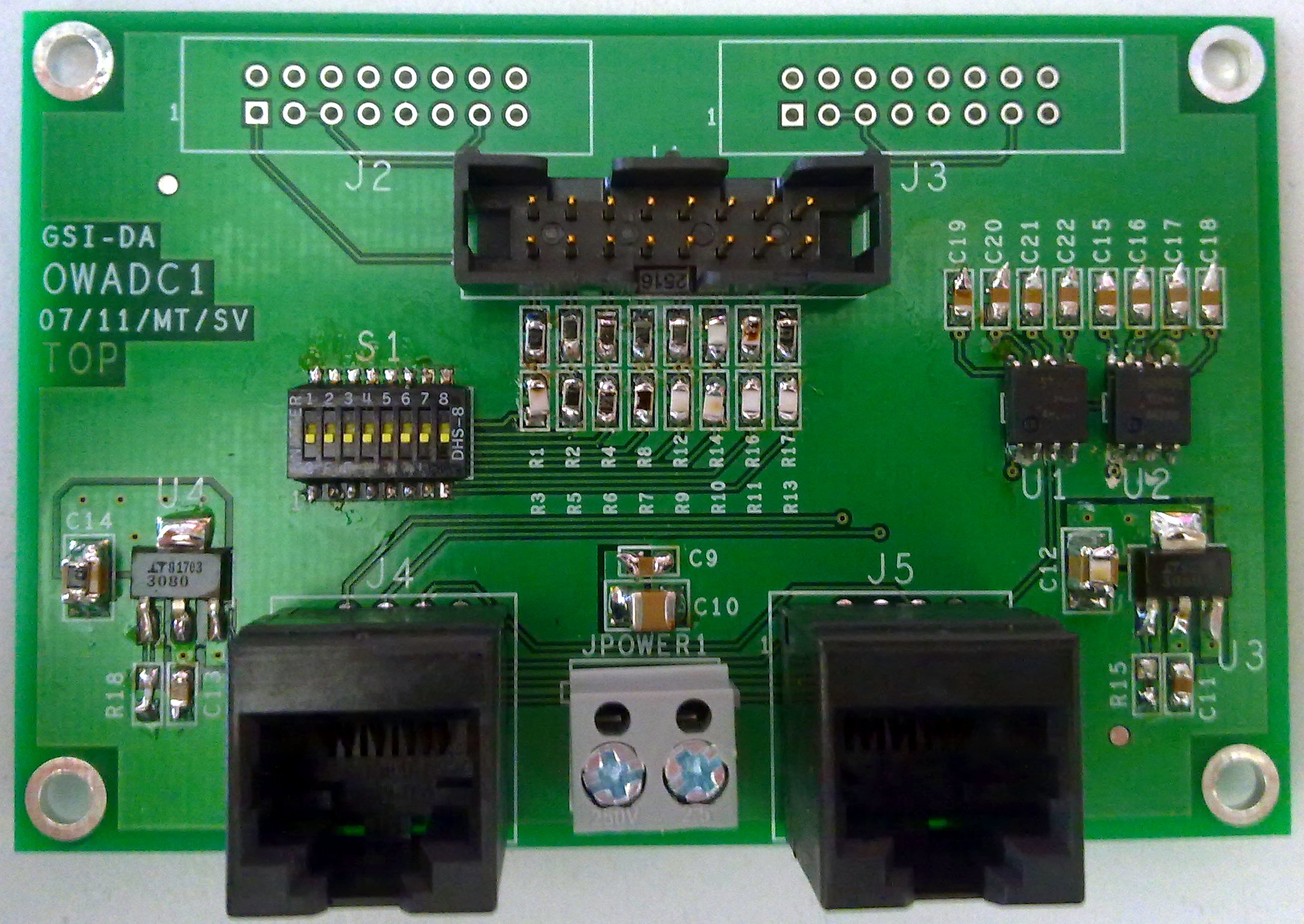You are here: GSI Wiki>Epics Web>EpicsProjectsAndActivities>HardwarePlatforms (2011-09-12, PeterZumbruch)Edit Attach

Hardware Platforms
- Prerequisites
- Installation of cross compiler (could be included already in the normal gnu compiler suite)
- Installation of software development kit (if available)
- then
- ... either (recommended) using the cross compiler for EPICS build
- create/modify EPICS target and host specific CONFIG/CONFIG_SITE files
- built target specific executables, libraries and applications
- ... or compile on target system specific OS
- Download of all sources (LINUX kernel and driver)
- Compilation of the kernel plus tools (busybox for example)
- transfer to the target hardware
- Compilation of EPICS inside the development package
- ... either (recommended) using the cross compiler for EPICS build
- Finally
- (Transfer to the target hardware)
- Test the IOC on the target machine.
- How To Port EPICS to a new OS/Architecture
- How to make your EPICS driver operating system independent
Introduction
In contrast to the standard EPICS installations, cross compiler and several other things are needed first. Generic steps:How-to's by EPICS wiki
-
Have a look at the How-Tos at the epics wiki,
especially at:
-- PeterZumbruch - 10 Nov 2011
- Cross compiling EPICS for the ETRAX CRIS architecture
- using the build system of EPICS
- contained in the in EPICS base since release 3.14.10
- using the build system of EPICS
- DIM as intermediate protocol with DIM API compiled for ETRAX CRIS
- using the EPICS-DIM Interface
- Summarizing:
- CPU: AXIS ETRAX 100LX MCM 4+16
- Microcontroller: ATMEL AT90CAN128
- I2C (internal)
- 2 × 4-channel 8-Bit DAC - Digital-to-Analog Converter
- CANbus
- galvanically isolated CAN - High-speed CAN Transceiver
- optional external power supply
- galvanically isolated CAN - High-speed CAN Transceiver
- SPI
- ADCs
- RS232
- 32 digital I/Os
- I2C (internal)
- CPLD: Xilinx XCR3064XL-6CS48C
- 2 × Rotary Code Switches, hexadecimal coding
- Ericsson PME 5218TS switching regulator for up to 6A 3.3V power usable for other boards
- full EPICS support
- Summarizing:
- Microcontroller: ATMEL AT90CAN128
- I2C
- CANbus
- SPI
- ADCs
- ...
- FPGA: Lattice MachX02-1200-HC
- FTDI USB to serial UART interface
- USB 2.0 connector
- Power over USB
- I2C devices
- 6 × Single-Channel 1-Wire Master
- 1 × 8-channel I2C-bus multiplexer with reset
- 2 × 4-channel 8-Bit DAC - Digital-to-Analog Converter
- galvanically isolated CAN - High-speed CAN Transceiver
- optional external power supply
- 2 × Rotary Code Switches, hexadecimal coding
- Reset Button for ATMEL
- 11 × LED's, free programmable
- Microcontroller: ATMEL AT90CAN128
- CPU/OS:
- ARM based "standard" Linux
- Data access
- internal USB interface
- via ASCII-based protocol
- EPICS compliant
- I/O
- 16 (differential/single ended) ADC analog input channels 0-5/10 Volts
- 16 I/O channels
- 16 DAC channels
- 6 "separate" 1-wire busses (common GND/Power)
- CAN bus interface
- adaptable 1U 19" housing
Architecture: ETRAX's CRIS by AXIS
-
The ETRAX 100LX MCM from AXIS (Wikipedia: en/de)
is the core of several boards (e.g. HADControl (HadCon), TRB) developed at our department.
To implement EPICS for this architecture two options are offered:
... more see Cris Architecture Page
Status: completed (host:x86); documentation:50% :
-- PeterZumbruch - 2009-11-10
Plugcomputer: DreamPlug / GuruPlug / SheevaPlug
-
The so-called plug computer family of GLOBALSCALE technologies is an interesting platform based on ARM5 Marvell core to have a quite powerful front-end PC available.
Ways to run EPICS on it are documented.
... more see PlugComputer
Status: starting documentation:1% :
-- PeterZumbruch - 2014-06-11
HadCon / HadShoPoMo / HadControl - Multipurpose Control Board
-
HadCon is a general purpose IO module for detector and experiment control as well as for small data acquisition systems.
 (HADControl general purpose board)
Since its first application has been a power monitor for the Hades Shower Detector it has been formerly introduced and well known as HadShoPoMo (Hades Shower Power Monitor (HADControl/HadShoPoMo general purpose board).
(HADControl general purpose board)
Since its first application has been a power monitor for the Hades Shower Detector it has been formerly introduced and well known as HadShoPoMo (Hades Shower Power Monitor (HADControl/HadShoPoMo general purpose board).HadCon has an SoC on-board, ETRAX 100LX MCM 4+16 from AXIS (Wikipedia: en/de) - which will be discontinued, see the new HadCon2. Running a standard Linux the Etrax provides "Connectivity to the world" via TCP/IP.
On the other side it connects via its internal serial interface to an ATMEL AT90CAN128 microcontroller and optionally to an Xilinx CPLD.
Via this junction the ATMEL provides a multitude of possible connections to field buses and general I/O ports. EPICS base and its applications, modules, and extensions can be cross-compiled to run on Etrax Axis' CRIS architecture (see section Architecture: ETRAX's CRIS by AXIS
... more see HadCon
Status:Just a hardware documentation:100% :
-- PeterZumbruch - 2018-03-15
HadCon 2 - Multipurpose Control Board
 It is the successor of the discontinued first version HadCon ( HADControl/HadShoPoMo general purpose board, HadCon @ Epics Wiki).
The module has an ATMEL AT90CAN128 microcontroller providing a multitude of connectivity:
It is the successor of the discontinued first version HadCon ( HADControl/HadShoPoMo general purpose board, HadCon @ Epics Wiki).
The module has an ATMEL AT90CAN128 microcontroller providing a multitude of connectivity:
I2C (8/4 fold (intern/extern) multiplexer), 6 channel 1-wire master, 8-channel 8bit DAC, galvanically isolated CAN - high-speed transceiver, 8-channel 10-bit SAR ADC, byte-oriented SPI, in total up-to 53 programmable I/O lines and optionally a Lattice MachX02 FPGA for fast data processing tasks.
While the discontinued precursor HadCon had an SoC on-board, its successor HadCon2 has broken up this concept in favour of a more open access:It doesn't have any CPU on board, but a USB connector to directly allow communication with any type and size of computer (e.g. PC, raspberry PI, dreamplug, ...) having an USB port on one side and at the other end the microcontroller and the FGPA. This communication is based on an ASCII-based protocol in view of easy implementation in detector control systems like e.g. EPICS and LabVIEW.
... more see HadCon2
Status:Just a hardware documentation:100% :
-- PeterZumbruch - 2014-11-04
OWADC1 - 1-wire 8-channel ADC board
 OWADC1 is a small, compact board designed by M.Traxler and S.Voltz (GSI/EE) to provide an 8 channel, max. 16bit ADC to be accessed by 1-wire protocol
OWADC1 is a small, compact board designed by M.Traxler and S.Voltz (GSI/EE) to provide an 8 channel, max. 16bit ADC to be accessed by 1-wire protocol
... more see OWADC1 - 1-wire 8-channel ADC board
Status:Just a hardware documentation:25% :
-- PeterZumbruch - 2017-02-09
HADES I/O Box
-
Based upon the HadCon2 multi I/O board, the DreamPlug Plug Computer, and the 1-wire based ADC board OwAdc a small, slim, multi analog/digital I/O box is built.
Its first use case will be the replacement of old hardware in the HADES experiment at GSI.
It provides:
Status:Kick off meeting :
-- PeterZumbruch - 2011-09-12
Attic
The project activites within this section are considered to be discontinued or only resumed upon request.- Meanwhile there seems to be no longer interest in this project from the side of CBM. Therefore this project is considered to be closed and discontinued.
- At ICALEPCS 2009, Miroslaw Dach, PSI, mailto:miroslaw.dach_at_psi.de, presented running solutions for EPICS application embedded into an Virtex 4 or even Virtex 5.
During private coversation he stated, that it took him several years to have it running, but now he is confident to present solution for new application and Virtex based platforms within a day. - Another Solution - Linux 2.6 available on Virtex4 FX 12. Have a look at my FREEDAC Ljubljana Notes on Victor Pucknell, Daresbury
Virtex4/5, Spartan
Discontinuation
The future FAIR Experiment CBM intends to use Virtex4 based front-end electronics.
-- PeterZumbruch - 10 Nov 2009
... more see Project page
Status: development discontinued
-- PeterZumbruch - 2009-11-10
-- PeterZumbruch - 10 Nov 2009
-- PeterZumbruch - 12 Sep 2011
Edit | Attach | Print version | History: r12 < r11 < r10 < r9 | Backlinks | View wiki text | Edit wiki text | More topic actions
Topic revision: r12 - 2011-09-12, PeterZumbruch
- User Reference
- BeginnersStartHere
- EditingShorthand
- Macros
- MacrosQuickReference
- FormattedSearch
- QuerySearch
- DocumentGraphics
- SkinBrowser
- InstalledPlugins
- Admin Maintenance
- Reference Manual
- AdminToolsCategory
- InterWikis
- ManagingWebs
- SiteTools
- DefaultPreferences
- WebPreferences
- Categories
 Copyright © by the contributing authors. All material on this collaboration platform is the property of the contributing authors.
Copyright © by the contributing authors. All material on this collaboration platform is the property of the contributing authors. Ideas, requests, problems regarding GSI Wiki? Send feedback | Legal notice | Privacy Policy (german)
